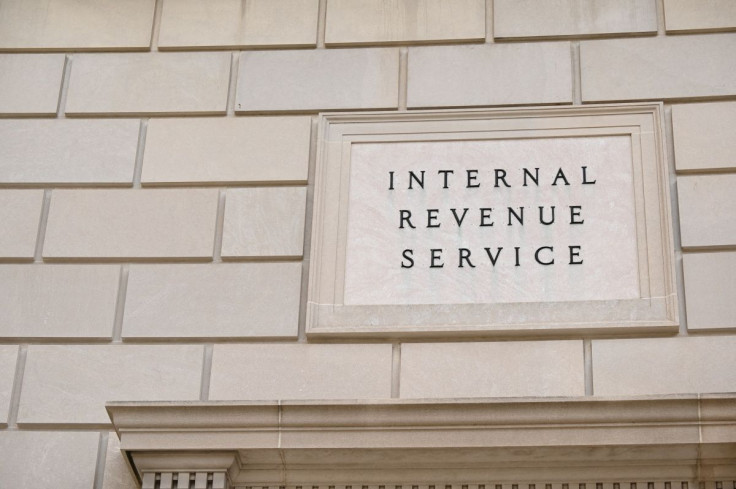IRS Spent $10 Million On Weapons, Military-style Equipment Since 2020: Report
KEY POINTS
- The IRS' gun lockers were already at an appropriate capacity before the recent purchases, says a report
- The agency plans on hiring 20,000 new employees over the next two years
- Since 2020, IRS has spent $2.3M on ammunition and $1.2M on ballistic shields
The Internal Revenue Service (IRS) spent over $10 million on weapons, ammunition and combat gear since 2020, a watchdog group said in a report.
According to the findings released by Open The Books last month, the IRS spent more than $5 million to ramp up its arsenal for its militarized agents in 2021. Open The Books is a nonprofit organization based in Chicago, Illinois, that tracks the spending of government institutions.
As per the group, the IRS spent $2.3 million on ammunition, $1.2 million on ballistic shields, $474,000 on Smith & Wesson rifles, $463,000 on Beretta 1301 tactical shotguns and $243,000 on body armor vests since 2020, New York Post reported.
The report also revealed a slew of other line-item expenditures made by the tax-collecting agency, including a mysterious $1.3 million spent on "various other gear for criminal investigation agents." The IRS has made thousands of dollars worth of expenditures on tactical lighting, ballistic helmets, optic sights and gear bags for weapons since the COVID-19 pandemic, the report added.
Since 2006, the IRS spent $35.2 million on ammunition, guns and military-style equipment, with the weaponry purchase surging exponentially between 2020-2021.
The nonprofit organization pointed out that the IRS' gun lockers were already at an appropriate capacity before the recent purchases. Before 2020, the IRS had stockpiled 5 million rounds of ammunition and 4,500 firearms for its 2,159 special agents who had "firearm authority" in view of their involvement in organized crime, drugs and gang investigations.
These firearms included AR-15 rifles and submachine guns, ramping up the size of the IRS to that of the 50 largest police departments in America, as per Free Beacon.
Last month, new IRS Commissioner Danny Werfel testified that the agency plans on hiring 20,000 new employees over the next two years, out of whom 600 (3% of the total ratio) new positions belong to special agents. This plan comes as part of the Biden administration's new $80 billion funding for the agency.
"The IRS is going to hire more data scientists than they ever have for enforcement purposes," U.S. Deputy Treasury Secretary Wally Adeyemo told reporters at the time.
A major portion of the new hires will replace nearly 12,000 IRS employees expected to retire over the next two years, including more than 4,700 enforcement staff, the agency said.
An ad by the agency said the applicant for a special agent position must be willing to "carry a firearm; must be prepared to protect him/herself or others from physical attacks at any time and without warning and use firearms in life-threatening situations; must be willing to use force up to and including the use of deadly force."
Not only the IRS, but 76 other rank-and-file agencies outside traditional law enforcement entities or the Department of Defense also spent more than $3 billion on "guns, ammunition, and military-style equipment," according to the nonprofit organization's report. These agencies include NASA, the Environmental Protection Agency, the National Institutes of Health (NIH) and the Small Business Administration among other institutions that have no to limited role in activities related to law enforcement.
For instance, the organization learned that the Office of Assistant Secretary for Health "is involved in the purchase of $100 million in guns, ammunition, and military-style equipment."
"It's not only the IRS, but dozens of other rank-and-file administrative federal agencies," Open the Books founder and CEO Adam Andrzejewski said in a statement. "So, just who are they preparing to battle?"
"A culture of militarization has permeated across the federal bureaucracy. In many cases, these agencies are stockpiling the very weapons some politicians seek to ban citizens from owning," he added.

© Copyright IBTimes 2025. All rights reserved.






















